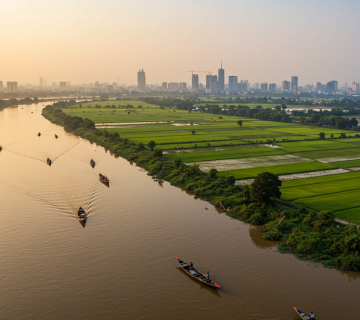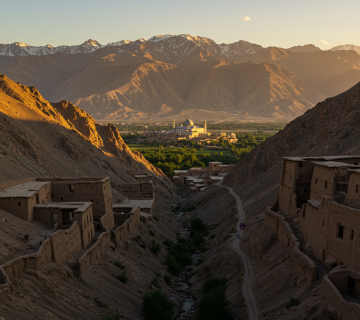Yemen: The Strategic Gateway to Southern Arabia and a Regional Geopolitical Crossroad
1. Geographical Location and Borders
Yemen is located in the southwestern corner of the Arabian Peninsula. It shares borders with Saudi Arabia to the north, Oman to the east, and is bounded by the Gulf of Aden and the Arabian Sea to the south. To the west, Yemen opens to the Red Sea. This positioning makes Yemen the only country in the Arabian Peninsula with direct access to both major international waterways—an element of lasting strategic significance.
2. Bab al-Mandab Strait: A Regional Keyholder
Situated on the eastern shore of the Bab al-Mandab Strait, Yemen plays a pivotal role in one of the world’s most vital maritime corridors. The strait connects the Red Sea to the Gulf of Aden and the Indian Ocean beyond. As a global artery for energy and goods transport, any developments within Yemen can immediately influence the stability and security of this critical chokepoint.
3. Climatic and Environmental Diversity
Despite its location in a generally arid region, Yemen enjoys notable climatic variation. The northern highlands—such as Sa’dah province—experience moderate temperatures and seasonal rainfall, while the southern coastal regions like Hadhramaut and Al-Mahrah are hot and dry. These environmental contrasts have shaped diverse lifestyles and ecological systems throughout the country.
4. Population and Urban Centers
Yemen’s population is estimated at approximately 34 million, with significant concentrations in cities such as Sana’a, Aden, Taiz, and Al-Hudaydah. The country’s demographic structure is predominantly young, offering both promising potential for economic development and a set of challenges related to infrastructure, employment, and education planning.
5. Regional Role and Geopolitical Significance
From a geopolitical perspective, Yemen is a central node in regional dynamics. Its proximity to Saudi Arabia, partial control over the southern entrance to the Red Sea, and its influence on maritime trade routes have placed it at the intersection of strategic interests for multiple regional and international actors.
6. Presence of External Powers
In recent years, Yemen has become a theater of overlapping regional and international interests. Powers such as the United States, Iran, Saudi Arabia, the United Arab Emirates, and more recently Russia have all engaged, directly or indirectly, with various local actors to establish or expand their influence in the region—each reflecting Yemen’s importance in global strategy.
7. Strategic Coastlines and Islands
With a coastline extending over 2,500 kilometers and a collection of key islands such as Socotra and Mayun, Yemen holds significant potential for maritime logistics, naval operations, and oceanic connectivity. Socotra’s location in the Indian Ocean, in particular, enhances Yemen’s capacity to monitor and influence international shipping lanes.
8. Environmental Challenges
Water scarcity, desertification, declining vegetation cover, and climate variability are among the environmental issues Yemen faces. These challenges—exacerbated by past instability—have had implications for internal migration, food security, and sustainable resource management.
9. Strategic Opportunities
In a post-conflict context, Yemen holds the potential to become a pivotal bridge linking the Arabian Peninsula to East Africa. Investment in port infrastructure, railway networks, and maritime logistics could transform regional trade. Additionally, untapped reserves of oil and gas in southern provinces represent future opportunities for economic revival and energy development.
Conclusion
Yemen’s geography remains a cornerstone of its enduring relevance in regional and international affairs. From the Bab al-Mandab Strait to its expansive coasts and diverse environments, Yemen’s strategic assets position it as a vital player in the evolving geopolitical map of Southwest Asia—one whose future role, despite past challenges, is likely to be dynamic and influential.





No comment